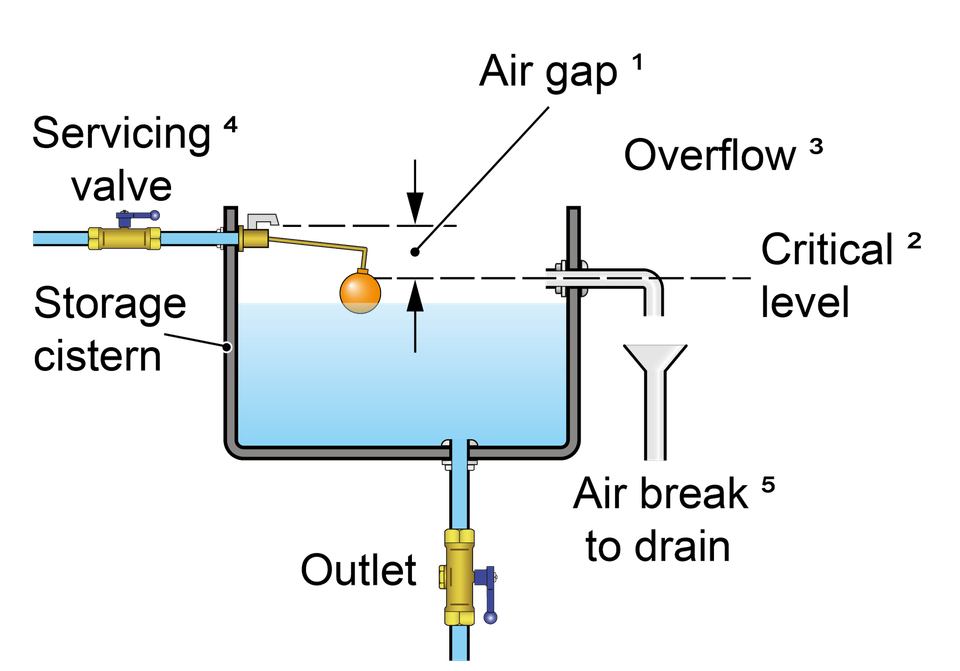What is a Type AG air gap?
A Type AG air gap is a non-mechanical backflow prevention arrangement comprising of an inlet which discharges water into a cistern, vessel, fitting or appliance fitted (receiving vessel) fitted with an outlet and minimum sized circular overflow.
A Type AG air gap is rated by the Regulators as suitable backflow protection against both back siphonage and back pressure for contamination risks no greater than fluid category 3.

A summary of some of the key requirements applicable to a Type AG air gap is given below:
The air gap is an unobstructed and complete physical break measured downwards between the lowest point of discharge from the inlet and the critical water level. It must be no less than 20 mm or twice the internal diameter of the supply whichever is the greater.
The critical level is the fluid level in the receiving vessel under fault conditions i.e. when the outlet is closed but the inlet continues to discharge. It is measured at least 2 seconds after closing the water inlet
The overflow must be circular and a minimum of 19mm throughout its length. It must be capable of draining the maximum inflow of water under fault conditions i.e. when the outlet is closed but the inlet continues to discharge.
Supply pipes maybe submerged but adjustable or dismantlable joints on the are not permitted below the critical water level. If the inlet itself comes into contact with the contents of the receiving vessel, for example due to splashing or foaming, then the air gap is considered to be compromised and must be increased to the point no contact occurs.
Where they discharge to drain the overflow and warning pipe must be fitted with an air break to drain or equivalent prior to the drain connection.
Type AG air gap installations should be inspected, and as necessary maintained every 12 months (BS EN 806: 5)
Feedback
To improve this information please give us your feedback >
Disclaimer
Uncontrolled if downloaded. This is informative, non-statutory guidance and intended for general guidance purposes only; it is subject to change.
Compliance with this information should not be relied upon as guaranteeing no enforcement action will be taken by water undertakers. Water Regs UK accepts no liability for loss, indirect or consequential loss arising from or in connection with this guidance document.
